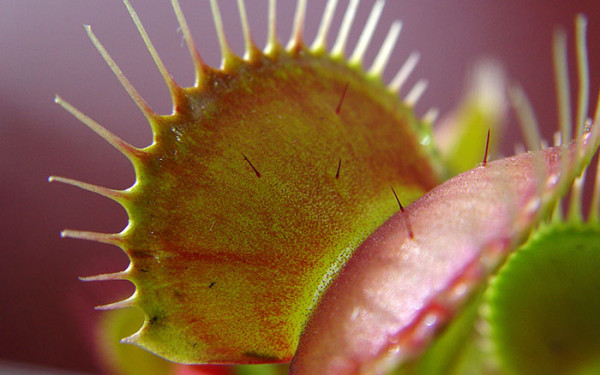Venus flytraps are fascinating plants, they’re like something out of a sci-fi film. This plant is sure to captivate the imaginations of children and adults alike. But when it comes to flies, they may not be as thrilled by the idea of this plant, as it is a carnivorous plant.
Meet the Venus flytrap
Darwin referred to it as the “most wonderful plant” in the world, and if that’s not enough to make you question why, then what is?
The botanical name for the Venus flytrap is Dionaea muscipula. The first section refers to Aphrodite, the daughter of Dione, and then muscipula is Latin for ‘mousetrap’ and ‘flytrap’.
When it grows in boggy areas, it can’t get nutrients from the soil, so instead it has developed, evolved and adapted its leaves to be traps.
The motion of the leaves closing together is well-known, but here’s how it works. Inside the leaves there are very fine hairs. If a fly lands and touches a hair, a trigger is set. Then, if another hair is touched within 20 seconds the trap, then closes. Using the digestive fluids, the fly is dissolved, and the energy is taken back into the plant.
But don’t be tempted to trick the plant into closing its trap around your finger or a pencil. This is because it will waste the energy and the oil from your skin can also damage the leaves.

Growing Venus flytraps
When growing Venus flytraps as a houseplant, they thrive in a brightly lit spot with a bit of shade. Although, ensure they’re not in direct sunlight as they may burn up. When considering their position, it’s ideal to place them near a door or window that is open occasionally to ensure there’s enough chance for insects to get in to feed on.
To ensure they get the drainage they need, a mix of sand and sphagnum moss is best when grown in pots. These plants can look great in a terrarium, with gravel underneath for a really aesthetically pleasing look. Depending on the type you buy, don’t expect it to grow huge and very quickly. They are slow growers, and some types can reach 30cm tall, whereas many will stay much smaller.
Caring for Dionaea muscipula
In terms of ongoing care, they’ll need different amounts of attention through the year. During summer they can be stood in a saucer of rainwater or distilled water. Then, in winter, water regularly enough to keep the soil moist. Pure water is best because the minerals in tap water can build up in the soil and have an adverse impact on the plant. Also, bear in mind, they get their nutrients from insects so feeding with plant food isn’t necessary.
Interestingly, digesting one insect can take the plant between three and five days. Then, it may go months between then and its next meal.
As well as being grown as a houseplant, in southern areas, they can also be grown outdoors if there is acidic, damp soil for them to thrive in.
Another thing to bear in mind is that Dionaea muscipula has a rest period. During this rest in winter, they like to be kept cooler. It may look like the plant is dead, but it is in fact dormant. Come spring, it’ll bounce back and look more normal. However, during the dormant stage it’ll still need water so water regularly to keep the soil from drying out.


Leave A Comment